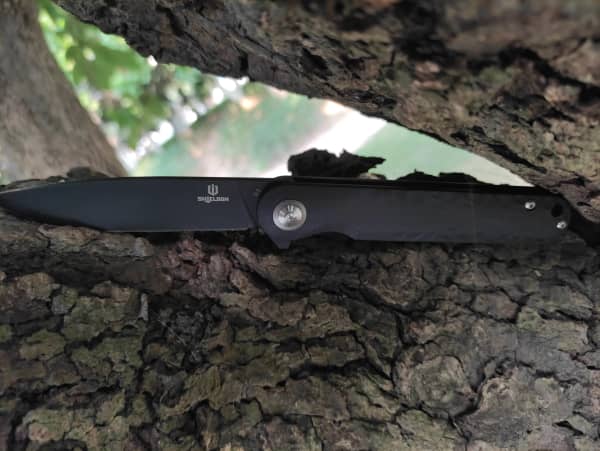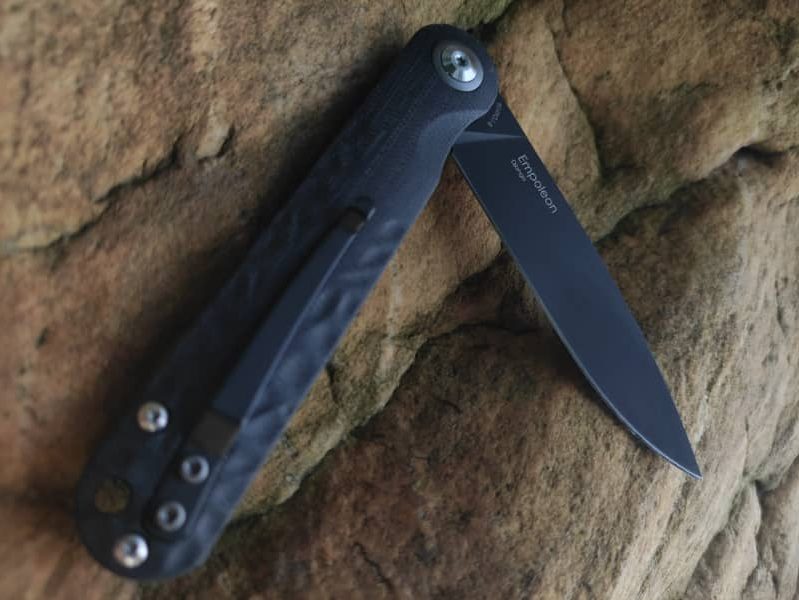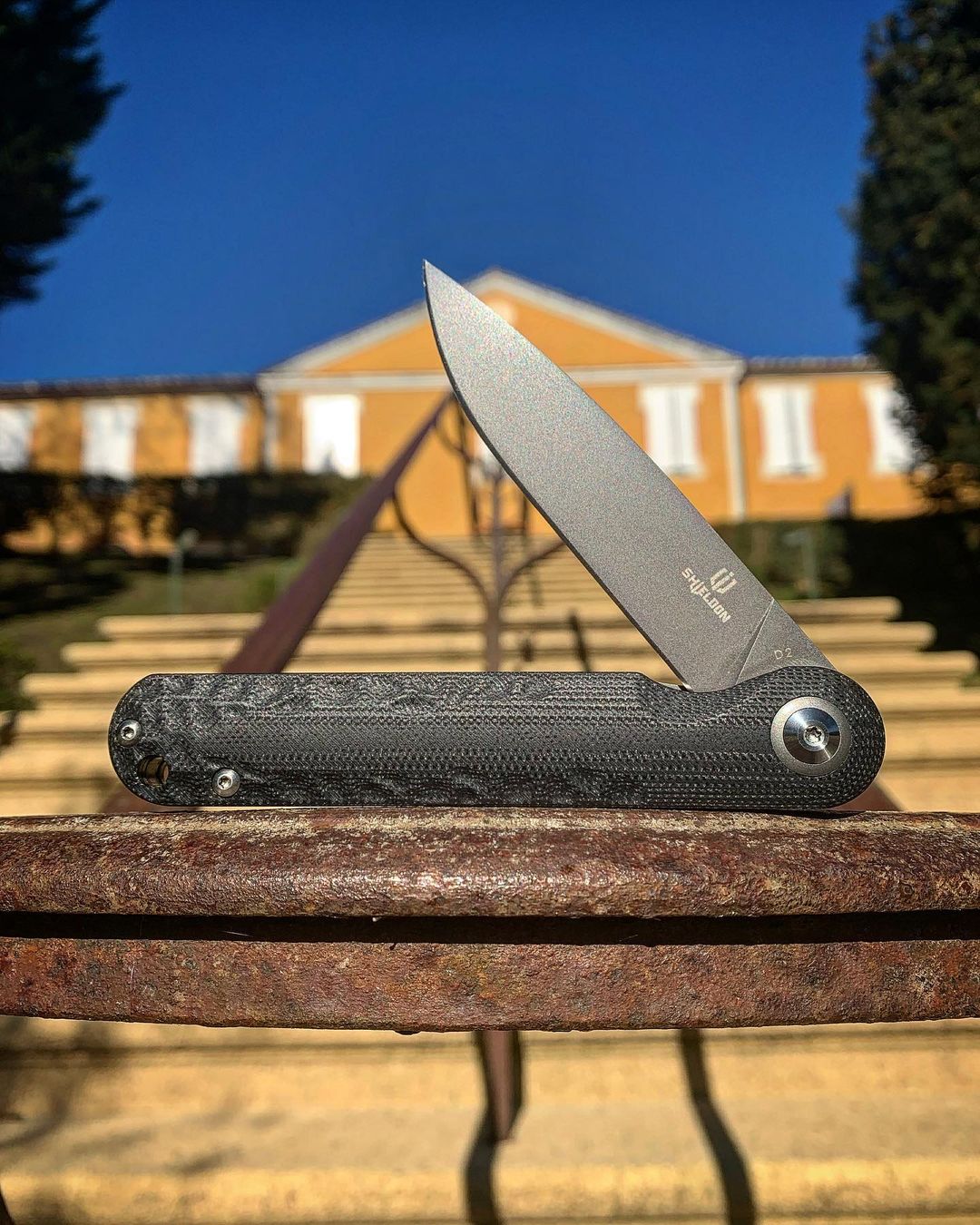How to Choose a Defensive Folding Knife: Tips to Consider

Finding the right defensive knife can be a little hard, especially if you are new to the knife game. There are a number of factors that you have to consider to avoid ending up with the wrong folding knife.
We are going to explore all these factors, from the brand, the material used, opening and closing mechanism, the handle type, among other things. If you are just getting started in the knife world, then strap yourself in and stay with me to the end to gain some valuable insights.
Considerations to Keep in Mind

There are way too many brands of outdoor knives in the market, all of them capable of what they do. Narrowing down your search to a folding knife that fits your needs can be time-consuming. To help you along, the following are the factors you have to keep in mind when choosing a defensive folding knife.
The Brand
Brands matter in every aspect of commerce worldwide, and the same principle applies to defensive folding knives. The best pocket knife brand is simply better at making these kinds of knives as they use better materials, better forging techniques, and designs. All these translate into desirable attributes like durability, great aesthetics, and reliable functionality. However, some high-end brands don’t come cheap. At the same time, simply because a brand is not well known doesn’t mean they make inferior products. Take your time to sample every knife manufacturer before making the final decision.
Budget
Defensive knives are not like regular ones. They are designed to handle pressure, and this means a lot of high-quality materials are used, and sophisticated engineering is involved. These ultimately contribute towards making the knife cost a lot more than other types of folding knives. Think of the amount you are willing to spend in relation to the features you are getting in return, then make the decision.
Blade Material
The blade is the most important part of a defensive folding knife. It is the knife itself, and the material used to make it should be a concern for you. There are many types of materials that are used to make blades. They range from steel, aluminum, carbon fiber, titanium, among many others. Each of these has different strengths and durability, and they have wide-ranging price tags. If you are looking for durability, then go for something made using carbon fiber or titanium. If you are on a budget, then a steel blade would do.
The Laws
You should never ignore the law. For all intents and purposes, the law defines any type of knife as a weapon, and defensive knives fall into that category. In the wrong hands, it could be a tool of harm, and this is the reason there are strict regulations when it comes to ownership. Therefore, familiarise yourself with all the knife laws within your locality before starting your hunt for a defensive folding knife. Otherwise, you may find yourself in trouble with the authorities over something that could be avoided.
Opening and Closing Mechanisms
A defensive knife is all about speed. When defending yourself against an ambush, the speed with which you are able to get the knife ready for action could be the difference between safety and harm. Pay close attention to the opening and closing mechanism for the pocket knife in question. There are a number of opening styles, and each has its unique way of operation. You will be best served by a defensive folding knife whose opening and closing can be triggered by a simple switch.
Blade Length
Folding knives are usually small, designed to fit in your pockets. Defensive knives, on the other hand, usually feature a large blade that can be used for tactical purposes. So how do these two blend to form a defensive folding knife? When compared to a fixed knife, a defensive folding knife should have a blade that is shorter than a fixed one but bigger than the regular pocket knives. Go for something that is between 2.75-inches and 3.5-inches. This strikes a balance between functionality and weight, allowing you to carry it around your person.
Weight
The weight of the knife matters a lot in defensive knives as they are directly tied to functionality and the speed of use. A defensive knife should not be too heavy or too light. When it is too heavy, carrying it around may be cumbersome, and it would take a lot more effort to use it with speed. If it is too light, it will lose its ability to inflict damage, and it may actually injure you in return. To avoid this, make sure you get the right balance, and you can easily tell this by holding the knife in your hands to feel how it fits in the hands.
Your Hand
Are you right-handed or left-handed? This is a factor that many people ignore as they assume that they can use the knife in any hand. Which, to some extent, is possible. However, a majority of knives are made exclusively for right-handed people as they are the majority. If you are left-handed, consider going for an ambidextrous knife which you can switch from one hand to another easily without having to re-adjust every time. This increases safety for the user as the chances of injuring yourself for using the wrong knife are eliminated.
Conclusion
When it comes to handling knives, getting the right fit trounces all the other factors like appearance. This is how you get value for your money in the long run. For more information on defensive folding knives, how they are designed, and where to get the best deals, check out our website at any time of day or night.
You can also follow us through the following ways:
https://www.facebook.com/ShieldonCutlery
https://www.instagram.com/shieldon_knives_and_tools/
https://www.youtube.com/channel/UC_Dz--HODWHFY4AaUF0z11Q
https://twitter.com/Shieldonknives1/
https://shieldonknivesandtools.tumblr.com/
https://www.linkedin.com/company/72285346/
https://www.pinterest.com/shieldonknivesandtools/
More video introductions:
https://www.youtube.com/watch?v=N0wLgMYEVak
https://www.youtube.com/watch?v=506F-XXX6v4
Article source: How to Choose a Defensive Folding Knife: Tips to Consider - Shieldon

